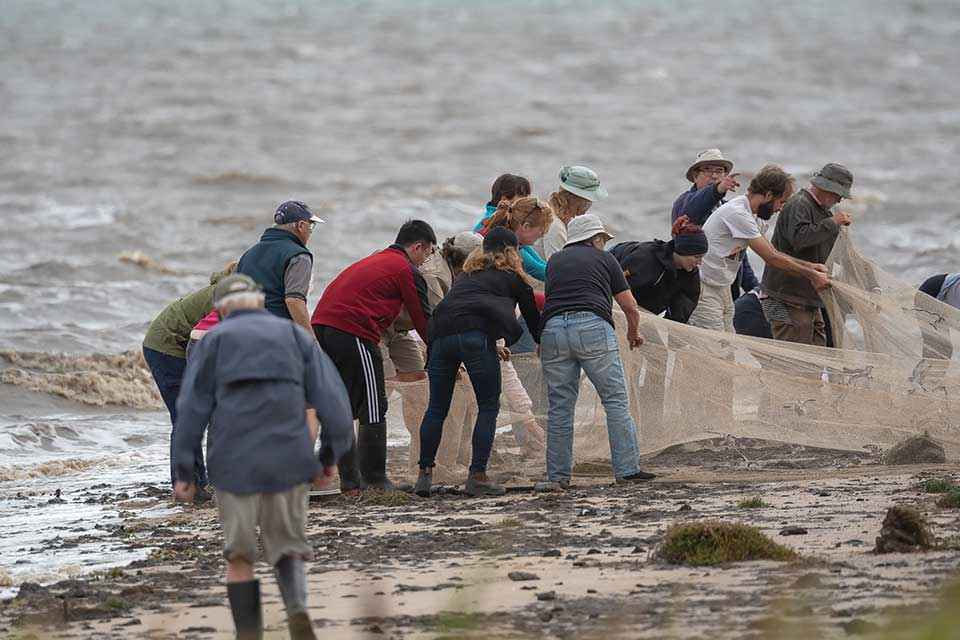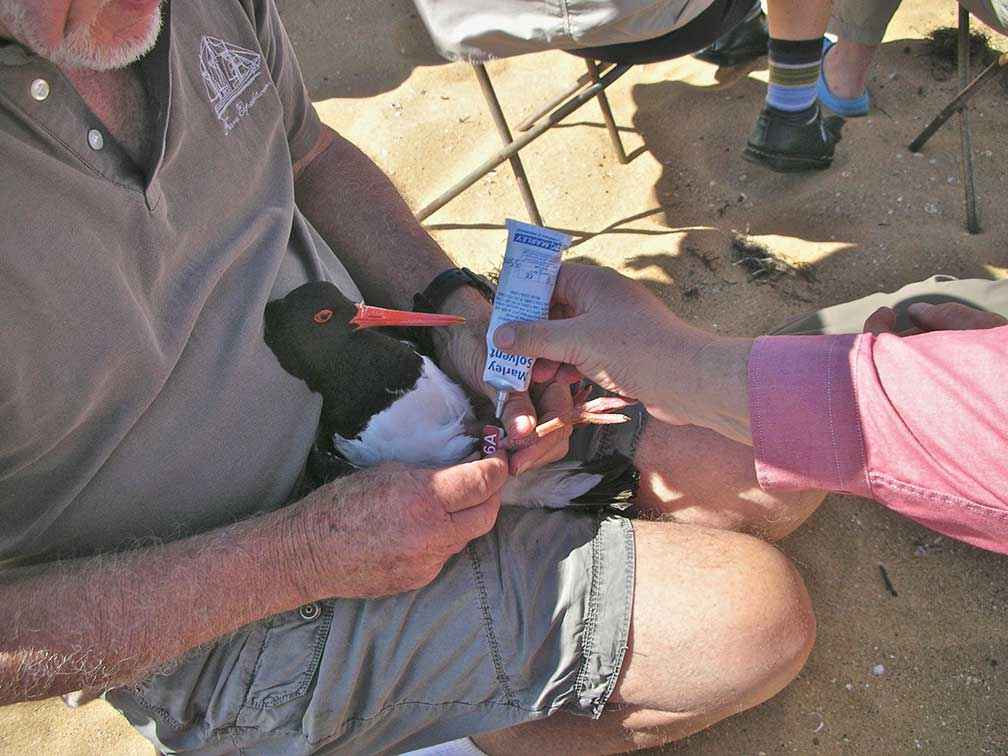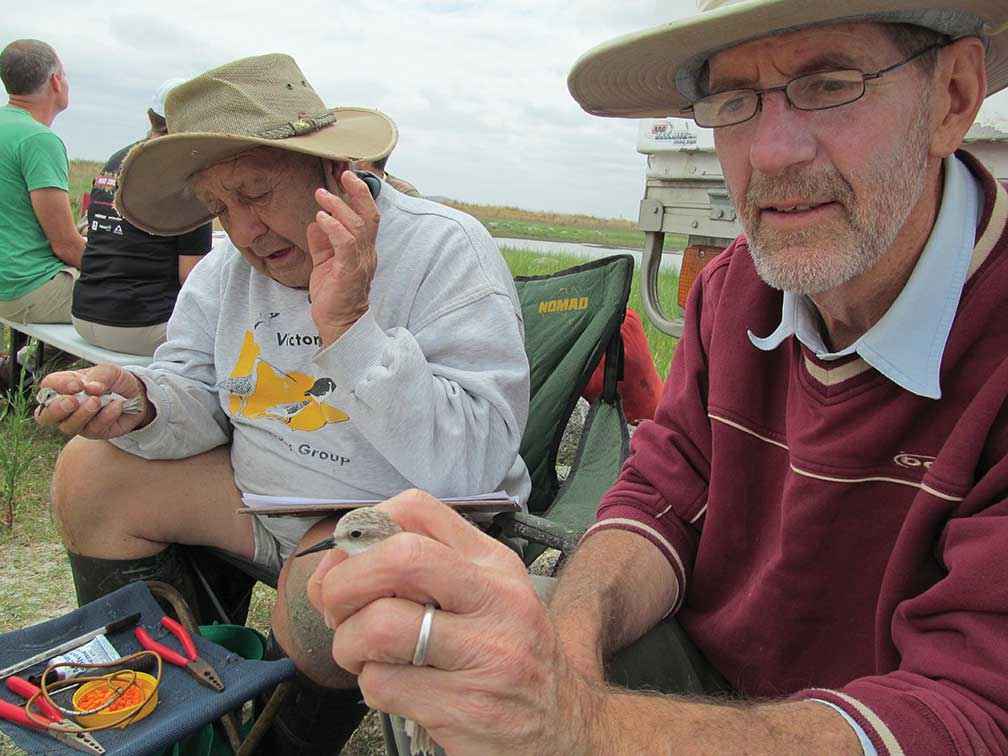Victorian Landcare Magazine - Spring 2019, Issue 76

When members of the Victorian Wader Study Group (VWSG) go out to conduct comprehensive studies of waders and terns throughout Victoria they face myriad logistical challenges. The group of 140 volunteers formed in 1975 and conducts 40 to 50 field excursions each year under the direction of recognised wader specialist Dr Clive Minton.
Each excursion requires planning around coastal tides, changeable weather, the varying migration patterns of the birds they study, the safety and welfare of birds and volunteers, boat transport, and the maintenance of special equipment subject to rust and corrosion.
Migrant and resident waders are captured by cannon-netting.
VWSG volunteers go through extensive training to obtain the technical skills needed to safely capture, monitor and release each bird.

Above: A pied oystercatcher having a leg flag applied at Rhyll on Phillip Island in 2013. This bird was recorded again in 2014 and 2016.
The group’s current chair, Roger Standen, attended his first VWSG excursion at the Western Treatment Plant at Werribee
in 1995.
“I was living north of the divide and found identifying waders pretty difficult. I thought actually seeing one in the hand might help. We only caught a few golden plovers but the knowledge in the group and their absolute commitment to understanding and protecting the birds and their habitat was really compelling. I’ve been involved ever since,” Roger said.
Roger says the group has banded more than 260,000 birds.
“We are in a unique position here in Australia to study birds that migrate to the Arctic Circle to breed. They land on our shores in the summer so we can monitor them and collect data about their breeding success and survival that can’t be done anywhere else in the world.”

Above: From left, Clive Minton and Roger Standen applying leg flags to red-necked stints at the Werribee treatment plant in 2013.
VWSG research involves population monitoring (by counting and catching), mapping migration routes, biometrics of species and subpopulations, weight changes due to migration, primary moult duration and mode, survival rates, reproductive rates, behavioural differences between adult and immature birds, and determining the age when species first breed.
Their records provide critical data for conservation programs and help to build a case for the protection of wader habitat both in Australia and internationally.
VWSG data has provided the foundation for hundreds of scientific papers and 40 editions of the group’s annual bulletin.
As well as the delight of handling birds such as red-necked stints, curlew sandpipers, red-necked avocets, double-banded plovers, bar-tailed godwits and pied oystercatchers, the volunteers spend thousands of hours each year maintaining, loading and unloading equipment and travelling to often remote and rugged capture sites.
The group has a long history of partnership with other programs and agencies including Coastcare, Parks Victoria, Melbourne Water, DELWP, Phillip Island Nature Parks, Birdlife Australia and many private landholders. VWSG is committed to talks and events that improve community knowledge and understanding of wader conservation. They reach out to young people, especially university students, and retirees, as potential volunteers.

Above: Award sponsors' logos.
The Victorian Wader Study Group will represent Victoria at the 2020 National Landcare Awards in the Coastcare Award category.